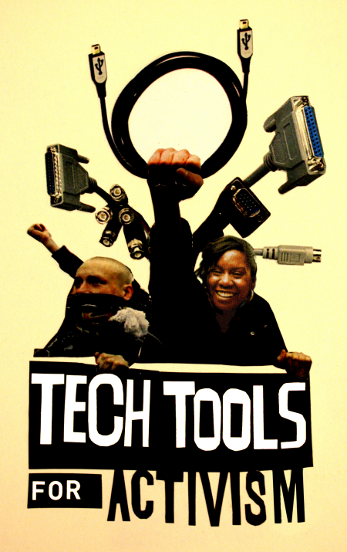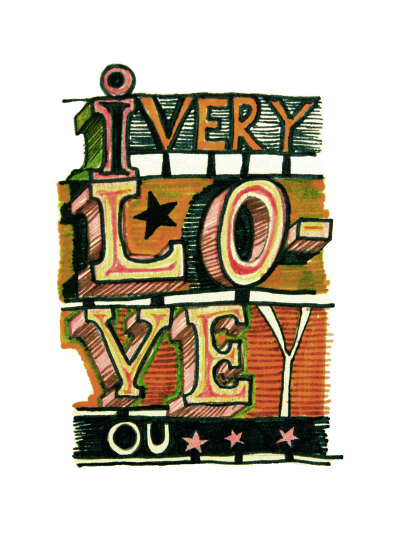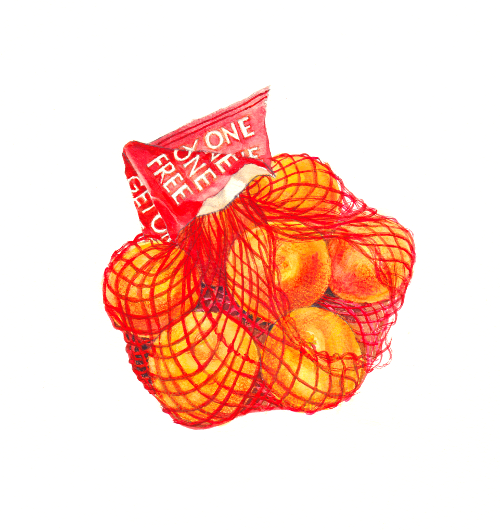User:Eleanorg/Journal 2.1
20 Sept
Democratic artworks
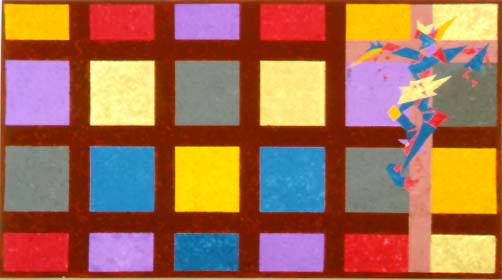

>> parody on the idea of voting leading to a coherent consensus, in visual form
 >> disparate fragments brought under one roof to create a totality. Relies on curation/filtering to become coherent.
>> disparate fragments brought under one roof to create a totality. Relies on curation/filtering to become coherent.
 >> nice approach of letting autonomous works form a collection via a common theme
>> nice approach of letting autonomous works form a collection via a common theme
 >> Problematic hierarchical curation hijacking 'democratic participation' discourse. But nice model of production - all in one room: interviews/print
>> Problematic hierarchical curation hijacking 'democratic participation' discourse. But nice model of production - all in one room: interviews/print
<iframe width="560" height="315" src="http://www.youtube.com/embed/viF-xuLrGvA?rel=0" frameborder="0" allowfullscreen></iframe>
Mass Labour
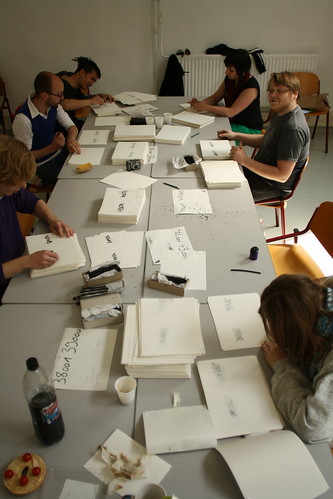 >> Roel Wouters' 2009 hand-numbered PZI catalogue.
>> Roel Wouters' 2009 hand-numbered PZI catalogue.
Roel Wouters // conditional design
Proposal for an activity: From http://conditionaldesign.org/
Construction of the Frame
Participants: In our case we were three people - Jonathan Roel and Luna. Every participant gets another participant appointed as a partner. Lead a conversation. During the conversation the partner has to note (in a text document) one word from each sentence of his 'master'. He is supposed to note the words that he finds interesting, specific or remarkable in some way. The notation will say something about both - the one noting the words as well as the one who speaks.
Conversation: Speak about "What do you think Conditional Design means to other people." The conversation should last ca. 20 - 30 minutes. At the end of the conversation each participant has a list of words he used noted by his partner.
Playing with the Frame:
Exchange the list of words you just created and take a list of words of someone else. Start anoter conversation with a topic that is close to you. When you speak use at least one word of your list per sentence. Use the First Step: The first player draws a line. The other players draw a line that goes over and under the last drawn line.
Knots
Technique for collaborative drawing
In Turns: The player elongates his/her line on both ends. The elongations have to go over and under a line of another player and may not go over the line of the same color twice in a row. When a line can no longer be elongated, it is considered dead for the rest of the game. When both ends of a line have died, the player may place a new line.
"Vitruvian Paint Machine"
>> nice variation on 'mic check' where artist becomes 'programmed' by others. Experiment with possbilities here of giving instruction/surrender to Other
Luna and Edo developed the Vitruvian Paint Machine for Take on me (take me on) an alternative production factory 17-25 october 2009, in the Van Abbemuseum, Eindhoven.
The Vitruvian Paint Machine invites the visitors of the Van Abbemuseum to use Luna and Edo as a vehicle for mural paintings, in accordance with several specific rules. These rules are all based on the proportions of the human body and the interaction with the visitors.
The visitors were asked to influence the painting by choosing one of the four colors: blue, red, green or black. The choosen bucket of paint had to be placed on top of a pillar. Luna and Edo then used the color to execute the according code.
Code to be executed by two painters on two ladders
COLOR RULES
If you you've been assigned a new color by a visitor, use the new color and its rules. Otherwise continue with your current color. Use the thin brush when there are 3 or less visitors in the room. Otherwise use the thick brush.
we went to the beach
>> Straight from 'A Communications Primer' - feedback keeps crowds organized etc. Beautiful visual experiment

19 Sept
Read this on post-digital print: http://www.baltanlaboratories.org/?p=3773
18 Sept
Trying out my first paper prototype on Jasper. I mocked up a quick loose-leaf 'catalogue' of last year's work and asked him to make a second copy of it using the photocopier, saying he could alter the order or content if he wanted. time-limit of 15 minutes.
Thoughts while making:
- who chooses source material?
- does source material need to be 'democratically' chosen?
- ideally it would be crowdsourced - outsource the responsibility!
- specific instructions needed (& time limit helped too: "make a copy of this document in 10 minutes")
- content needs to be readily understood/relevant to audience (Eg at PZI, 'first year' catalogue images already familiar - can be quickly edited to taste)
- what is the motivation to make a copy? << ideological is nice but maybe financial too:
- "make a copy of this and sell it yourself" << micro-economies (Q: how does this relate to ideological budget cuts/"small state"/DIY labour?)
16 September
Blog post about 'Various Fires in Publishing' here: http://eleanorg.org/blog/vf
15 September
Interesting talk today @ Witte de With on self-publishing.
Most interesting q that came up was the irony of self-publishing supposedly being about resisting media monopolies, but without a readymade distro network you need to use FB to distribute - thus relying on/reinforcing media monopoly. Rob from Fucking Good Art seemed not to have much patience with this dilemma, being happily old-fashioned, talking about distributing through the networks of its writers and friends.
How many people need to have read something before it can be said to have been distributed? It's a matter of scale I guess, from total failure to roaring success, with vast grey zones in between. They were talking about the conscious turning-away of artists from hi tech and its parallels in networks like Path https://path.com/ - yuppified Facebook limited to 150 friends.
Interesting themes...
AND:
- Clash of DIY ethic/intention with DIY projects' reliance on FB for distro/marketing
- how then to create a meaningful r'ship with reader outside of the mediation of a shop (or FB)?
Marit Munzberg (LemonMelon):
- annagrammatical books/practice - rearranging, merging
- book as a verb or 'conceptual space'
- publishing = creation of the public > thus what is publishing's political role?
- can a book be a library? (link to dissolute img)
Rob (Fucking Good Art):
- Paper & bicycle/ network of friends distribution model
thoughts
Relevance of print publishing to digital dilemmas - especially the problem of distribution & promotion. Would be good to tie these things more closely together - for example, I like AND's Piracy project where people have to commit to printing a book themselves, thus 'bringing it back into print' quite literally. Strong link here to dissolute image & distributed hosting, where you outsource the commitment to promote or adopt something.
Also like the real-time book production, quickly printing screengrabs & pirate pad jottings. No fuss, just print & staple as quick documentation. experiment at LUX with these provisional ways of assembling stuff, gather things online then print them quick.
4 September
"Consent" The nights are drawing in, long sunshine, and yr 2 yr 2 yr 2 almost here!
Want to explore the idea of 'publishing' in a more focussed way. Over summer I've been making a book, a thing with staples in to make money by selling to people, and this question keeps coming up. Self-publishing, vanity publishing, print-on-demand, 'actual' publishing - I've never really understood what the difference is between putting ink on paper, and "really" publishing something. Maybe it becomes 'real' publishing when you add distribution into the equation?
Question: what is the difference between creating, disseminating, and publishing?
Why do people in the "age of the interweb" still lust after book deals? Not just money but a sign of success. Keep blogging and you could be the next EL James. What exactly is agreed upon in these book deals? Copyright traded for cash, printing + distro?
I've been reading those books they give to pre-teens about "growing up". Keeping it in your pants is mentioned a lot; consent, not so much. Always been a vague ambition to write one of those things. I mean, publish one of those things. How to do so in a consensual manner: Play!Fight! minus centralized control?
Been learning jQuery; images & text responsive to scripts, to distant events, to real objects. Easy to do on the internet, but how to do print publishing which is for want of a better word - ouch - "interactive"? ....why ouch? ---> trivial tokenistic participation; the 'open work' already designed & signed by the original author (oh yeah there's that thing about authorship again).
So actually yes the 'open work' -- touched on this in my dissertation; open work not really open, who gets the by-line at the end of the day?
How to integrate PZI coding into print media. Talk to OSP. Look at Fluxus kits and all that. Interactive books (As precursors to video games). And video games as precursors to...? What place now for "choose your own adventure" books? Thinking of factories and Florian, methods for making stuff.
What next:
- Get examples of "interactive" print media
- learn how e-publishing works
- learn how print on demand works
2 Aug
Dissolute Image: appending image attributes with jQuery to allow incremental page-load: http://ox4.org/~charlie/image_block.html
1 Aug
Summer!
And what do I do when I get out of school; I make papier mache obviously. And here I was about to run off to a commune in the hills to make papier mache happily ever after, when I remembered the things I made in the first trimester here and how there could be some link between:
HANDMADE IMAGES and THE INTERNET
my dirty secret
good at this point to come clean and see what happens when the world of beautiful objects tries to fit into the world of PZI geekery. This is what I get up to in my spare time:
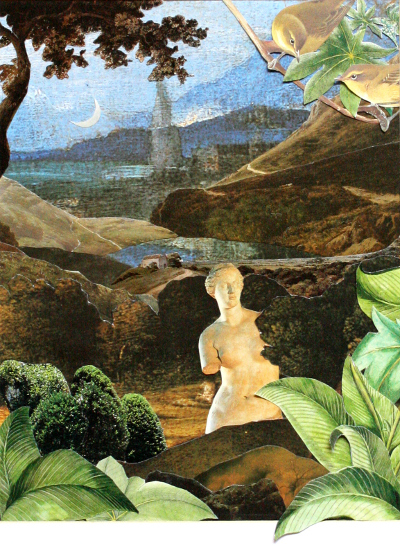
Yes I made that last one with a paintbrush.
networked graphics
There seems to be some irreparable divide between the joy of making stuff with paper + glue and the cold hard world of code. Unless you go down the road of Arduino joy obviously. But staying within the browser: all the time at PZI I've been buzzing like a reluctant bee around this question of how images could be made porous and responsive. Maybe here there is a way forward that could start to heal the chronic split between my love of drawing + handmade messiness and my curiosity about programming.
Consent
"Consent", my proposal for a magazine with responsive content - thus democratically curated - is in the same vein here. Images fade out when they are unpopular, etc. Similar to the traceroute project where the appearance of a thing corresponds to its location. I think the way forward is to get to grips better with jQuery, and use it for a few illustration projects.

